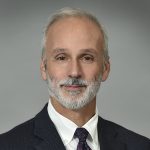Anyone familiar with Superfund litigation knows that one of the first tasks a liable party undertakes is to search for other potentially responsible parties (PRPs). For sites with comparatively short life spans – those that began operating in the 1950s or later – this effort is time-consuming but usually fairly straightforward. By contrast, older sites – those where operations occurred 100 or more years ago – present much greater challenges. Finding other PRPs at such sites is often possible, and well worth the effort, but it usually requires a creative approach. The primary obstacle is simply understanding who those other PRPs might be and how they once played a significant role in the operation of today’s contaminated sites.
Prior to the introduction of anti-trust legislation, many large holding companies wielded tremendous power in not just financial control of their subsidiaries, but in many cases day-to-day operational management of industrial sites. The implications of these historic relationships with respect to present-day responsibilities for remediation costs could be profound. For example, many gas and electric utilities are currently dealing with contamination at former manufactured gas plants which may once have been owned or operated by large national holding companies. These holding companies were often involved in the supervision and management of the operating companies and thus, their successors may be liable today under the Comprehensive Environmental Response, Compensation and Liability Act (CERCLA) or related state laws. In other cases, old railroad yards and rights-of-way contaminated with arsenic and petroleum products may have had historic connections to such holding companies. Generally, any site with a long history of contamination needs to be assessed innovatively to uncover such potentially liable parties.
The first step involves determining whether other PRPs exist. In cases focused on facilities that operated one hundred or more years ago, there will be no witnesses. Therefore, locating good written records should be the main focus. Many documents exist in public archives – at the federal, state and local level – that can help established lines of corporate ownership. More importantly, these records often contain important clues about whether the entity in question was connected to, or perhaps even controlled by other entities. For example, Federal Trade Commission reports and Securities and Exchange Commission materials are just two of the many types of public documents that may contain abundant information about these historic relationships.
The companies themselves may also have kept records that could be useful. Financial ledgers, personnel records, production records, corporate minutes and other similar documents should be located and assessed. Such documents frequently contain information that, if analyzed correctly, may reveal links to other older PRPs.
Once evidence of connection to other PRPs has been developed, defining and pursuing the claims is the second step. The critical question is whether to pursue an “owner” and/or “operator” claim under CERCLA. The decision must be made based on your evidence coupled with a thorough understanding of the United States Supreme Court’s decision in United States v. Bestfoods, 542 U.S. 51 (1998), and subsequent cases interpreting that decision. The Bestfoods case and its progeny set the standard for what a plaintiff must prove in order to succeed with these types of claims.
Under Bestfoods,
any person who operates a polluting facility is directly liable for the costs of cleaning up the pollution. This is so regardless of whether that person is the facility owner, the owner’s parent corporation or business partner.
To establish “operator” liability under CERCLA, Bestfoods held that:
an operator must manage, direct, or conduct operations specifically related to pollution, that is operations having to do with the leakage or disposal of hazardous waste, or decisions about compliance with environmental regulations.
It will not be enough for a plaintiff to simply establish some relationships between a parent and a subsidiary. Bestfoods demands more:
it is entirely appropriate for directors of a parent corporation to serve as directors for its subsidiary, and that fact alone may not serve to expose the parent corporation to liability for its subsidiary’s act.
Ultimately, the Bestfoods court held that
activities that involve the facility but which are consistent with the parent’s investor status, such as monitoring of the subsidiary’s finance and capital budget decisions, and articulation of general policies and procedures, should not give rise to direct `operation` liability. The critical question is whether, in degree and detail, actions directed to the facility by an agent of the parent alone are eccentric under accepted norms of parental oversight of a subsidiary’s facility.
Plaintiffs need to develop evidence and assess their case with Bestfoods in mind. Demonstrating that companies had interlocking directors, or that the parent company owned a substantial portion of the voting stock of the operating company may be useful background evidence. But standing alone, such evidence will likely not be enough. A plaintiff must be prepared to show that its predecessors had a relationship with an early parent that was eccentric (most likely measured by the norms of the time). A plaintiff must also show that the alleged controlling entity managed, directed or conducted operations specifically related to pollution at the subject site.
Locating PRPs at older sites and developing the evidence to establish their liability often requires a non-traditional approach. Pursuing these claims is a difficult task but has been successfully accomplished several times in recent years, resulting in very favorable outcomes for the plaintiffs.
1Bestfoods, 524 U.S. at 65.
2Id. at 72.
